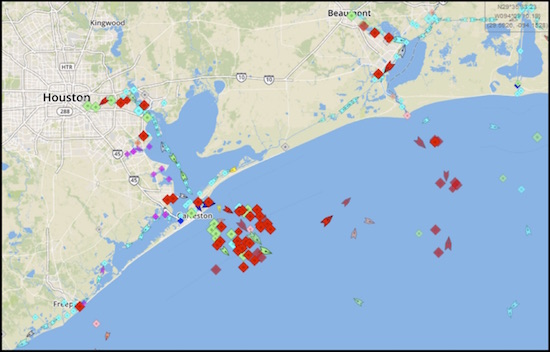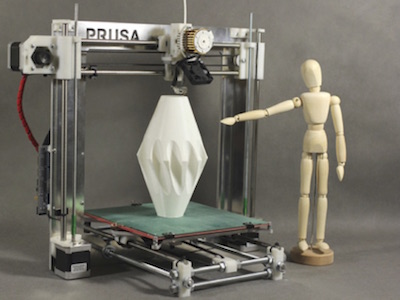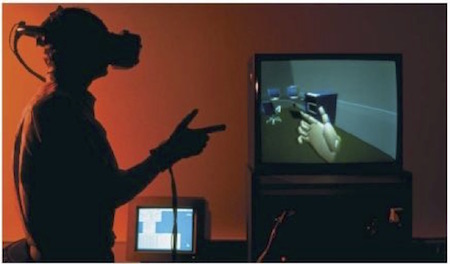Now, think for a minute about the solar alternative. Today’s technology lets you to put solar panels on your roof and power your home. You can install storage batteries to keep the lights and air conditioning on at night. Your solar panels can recharge the electric vehicle you drive to work and back.
All that is possible right now. If you care to spend the money, you can probably go completely off the grid without changing your lifestyle very much. That is especially true in the sunny southwestern states, Florida, and Hawaii. Few people quit the grid entirely because to do so is still expensive. That won’t always be the case. Prices have been falling fast.
The equation is quite different in emerging-market nations near the equator. Decentralized, renewable energy sources are more cost-effective than fossil fuels right now in countries that don’t already have a well-developed energy infrastructure. Much of Africa will never have an electric grid like ours because it will never need one.
A world economy in which we don’t have to transport fossil fuels back and forth will look different. See all the red boxes and arrows on this Houston/Galveston map, via MarineTraffic.com? Those are oil, gas, and chemical tankers. The diamond-shaped ones are anchored, waiting their turn to load or unload. The map depicts globalization in action.

Get rid of fossil fuels and none of these ships will have to go anywhere. They won’t consume fuel just to move fuel; they won’t sink and make a mess; and they won’t be terrorist targets. Our navy will not need to guard choke points like the Strait of Hormuz. OPEC will be irrelevant for most people.
That world is possible already, and it is getting increasingly practical. I believe a shift to renewables will happen even without government subsidies. In fact, I would like to see subsidies eliminated now. They do more to hold up progress than to encourage it.
Fossil fuels won’t go away completely. They’ll remain necessary in niche markets and applications. Nevertheless, I think the economic benefit of harvesting energy near the end user will grow more apparent every year. In time, energy will cease to be an international concern and become a purely local matter. That facet of globalization will just fade away. Cheap, abundant energy will be as normal as the corner gas station is now.
Plastic Doodads
As John noted in last week’s letter, “The Trouble with Trade,” until recently there were two categories of imported goods. Some were expensive, high-quality luxury products: sports cars, wine, fine cheeses, and chocolates. Others were cheap, low-quality products made mostly in developing countries. Japanese cars weren’t a US status symbol in the 1960s or 1970s.
What do Americans think about imported goods now? We rarely think about them at all, even though we buy them every day. Globalization both raised the quality of foreign-made products and made them unremarkable.
Globalized manufacturing also had a dark side. Manufacturing jobs left the United States as companies moved production offshore. On the other end, gaining those jobs was a mixed blessing for developing countries. Millions of people emerged from deep poverty, but their cultures changed, and rampant, unregulated growth damaged the environment.
More importantly, all these new goods had to find their way from the factory to the buyer. Now, entire shiploads of containers stuffed with shrink-wrapped plastic doodads arrive in US ports every day. They have to be unloaded, sorted, and moved by truck or train to their destination. The logistics chains that do this are organizational miracles, but they consume valuable resources and time.
We wouldn’t need this massive apparatus if it were cost-effective to produce finished goods in small quantities near the final buyer. 3-D printing technology is doing exactly that. Commercial-scale “additive manufacturing” uses a wide variety of materials to make both simple and complex objects.

Additive manufacturing’s key advantage is its flexibility. The same equipment can make completely different products with just a software update and minor retooling. This capacity opens up a world of possibilities. Instead of specialized factories producing mass quantities of the same thing, local manufacturing centers can make only the quantity needed in the local area, as products or parts are needed.
Moreover, local manufacturing will enable much greater customization to fit local needs. Freed from a global process that forces them to sell monotonous, widely marketed goods, retail stores could use local manufacturers to produce exactly what local buyers want.
Will local manufacturing completely replace global supply chains? No, but it can still make a huge difference by reducing freight traffic. Consumers will have higher-quality goods at the same or lower prices, and the environment will stay cleaner.
Today’s just-in-time logistics systems have already reduced inventory levels and contributed to broad deflationary trends. Localized manufacturing should accelerate this shift even further. Instead of holding finished products in inventory, manufacturers will store raw materials: plastics, metals, minerals, wood, etc. Trade in finished goods will occur locally, in proximity to end users.
Virtual Airports
Communications technology was supposed to reduce the need for travel. Yet even with videoconferencing now widely available, globalized business professionals fly more than ever. Why?
One reason is that communications technology is still primitive. We can sit in front of a monitor across from another person in front of their monitor. We can see each other, hear each other, and view documents together. All this is wonderful, but it’s still a far cry from face-to-face interaction.
Virtual reality and augmented reality technology promises to fill this gap. Right now, we can wear special devices and enter startlingly realistic fantasy worlds. The potential for entertainment and gaming is obvious. The suddenly and immensely popular Pokémon Go game is a form of augmented reality.
People love it, but the more common VR/AR use may turn out to be routine business meetings. 
Walk through any airport and the “road warriors” are easy to spot. They’re veteran travelers like John, who jet between major world cities so they can… walk into a room and talk to people. They may spend more time going to and from meetings than they spend actually meeting. This is woefully inefficient.
With advanced VR/AR technology, people in different countries will be able to “meet” in a virtual conference room with the full sense of being physically together. Having access to subtle cues – facial expressions, tones of voice, sideways glances – will make these meetings seem almost real.
Something like the fabled Star Trek “holodeck” is decades away, but many road warriors would be happy to get 90% of the way there. Eliminating wasted travel time might easily double or triple their productivity.
VR/AR will let businesses operate efficiently without physical proximity to each other. The vast air transportation infrastructure, and all the energy and resources that go into it, will become less critical and will ultimately shrink. Meanwhile, workers and businesses will become more “present” to their local communities simply by virtue of spending more time at home.








